Greetings, fellow SkyWatchers! It’s a dark sky weekend and a great opportunity to really get to know some unusual deep sky objects – like brilliant open clusters and tiny compact galaxy groups. Even if you just sit outside and stargaze, you might catch a member of the Alpha Aurigid meteor shower! Are you ready? Then get out your binoculars and telescopes and let’s head out for adventure…
Friday, September 26, 2008 – Tonight we’ll begin our adventures with Vulpecula – it’s time to go fox hunting. What we’re after requires dark skies – but can be seen in both binoculars and a small telescope. Once you’ve found Alpha begin about two fingerwidths southeast and right on the galactic equator for NGC 6823 (RA 19 43 10 Dec +23 17 54).
The first thing you will note is a fairly large, somewhat concentrated, magnitude 7 open cluster. Resolved in larger telescopes, the viewer may note these stars are the hot, blue-white variety. For good reason… NGC 6823 only formed about two million years ago.
Although it is some 6000 light-years away and occupies about 50 light-years of space, it’s sharing the field with something more – a very faint and very large emission/reflection nebula called NGC 6820.
In the outer reaches of the star cluster, new stars are being formed in masses of gas and dust as hot radiation is shed from the brightest of the stellar members of this pair. Fueled by emission, NGC 6820 isn’t always an easy visual object – it’s faint and covers almost four times as much area as the cluster and using a filter helps. But, trace the edges very carefully, since the borders are much more illuminated than the region of the central cluster. It’s like a whisper against your eyes. Take the time to really observe this one! The processes going on are very much like those occurring in the Trapezium area of the Orion nebula.
Be sure to mark your observing notes. NGC 6823 is Herschel VII.18; and NGC 6820 is also known as Marth 401!
 Saturday, September 27, 2008 – Today we celebrate the 1814 birth of Daniel Kirkwood. In 1866, this American astronomer was the first to publish his discovery of gaps in the distances of asteroids from the Sun – “Kirkwood Gaps.” Not only did he study the orbits of asteroids, but he was the first to suggest that meteor showers were caused by orbiting debris from comets. Known as “the American Kepler,” Kirkwood went on to author 129 publications, including three books.
Saturday, September 27, 2008 – Today we celebrate the 1814 birth of Daniel Kirkwood. In 1866, this American astronomer was the first to publish his discovery of gaps in the distances of asteroids from the Sun – “Kirkwood Gaps.” Not only did he study the orbits of asteroids, but he was the first to suggest that meteor showers were caused by orbiting debris from comets. Known as “the American Kepler,” Kirkwood went on to author 129 publications, including three books.
Tonight it’s time to break out the muscle and challenge big telescope users to hone their skills. It’s galaxy hunting time and our destination for tonight is Hickson Compact Group 87 (RA 20 48 11 Dec -19 50 24)…
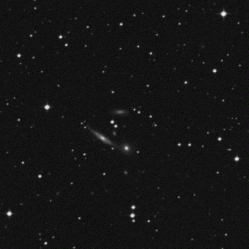 Several billion years ago, on the ecliptic plane about four degrees west-southwest of Theta Capricorni, and around 400 million light-years from our solar system, a galactic association decided to form their own “Local Group.” Orbiting around a common center about every 100 million years, their mutual gravity is pulling each of them apart – creating starbursts and feeding their active galactic nuclei. Small wonder they’re shredding each other… They’re only 170,000 light-years apart! One day they may even form a single elliptical galaxy bright enough for the average telescope to see – because as they are now, this group isn’t going to be seen with anything less than 20″ in aperture.
Several billion years ago, on the ecliptic plane about four degrees west-southwest of Theta Capricorni, and around 400 million light-years from our solar system, a galactic association decided to form their own “Local Group.” Orbiting around a common center about every 100 million years, their mutual gravity is pulling each of them apart – creating starbursts and feeding their active galactic nuclei. Small wonder they’re shredding each other… They’re only 170,000 light-years apart! One day they may even form a single elliptical galaxy bright enough for the average telescope to see – because as they are now, this group isn’t going to be seen with anything less than 20″ in aperture.
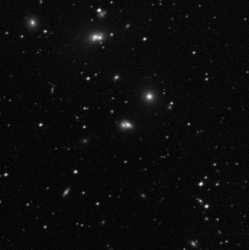 So, shall we try something a little more within the realm of reality? Then go ahead and drop about eight degrees south of Theta and try picking up on the NGC 7016/17/18 group (RA 21 07 20 Dec -25 29 15). Are they faint? Of course! It wouldn’t be a challenge if they were easy, would it? With an average magnitude of 14, this tight trio known as Leavenworth 1 is around 600 million light-years away. They’re very small, and not very easy to locate… But for those who like something a bit different?
So, shall we try something a little more within the realm of reality? Then go ahead and drop about eight degrees south of Theta and try picking up on the NGC 7016/17/18 group (RA 21 07 20 Dec -25 29 15). Are they faint? Of course! It wouldn’t be a challenge if they were easy, would it? With an average magnitude of 14, this tight trio known as Leavenworth 1 is around 600 million light-years away. They’re very small, and not very easy to locate… But for those who like something a bit different?
I dare you…
Sunday, September 28, 2008 – As your starry mission this evening, we’ll continue our studies in Vulpecula with a spectacular open cluster – NGC 6940 (RA 20 34 24 Dec +28 17 00). At close to magnitude 6, you’ll find this unsung symphony of stars around three fingerwidths southwest of Epsilon Cygni.
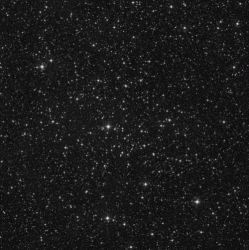 Discovered by Sir William Herschel in 1784 and logged as H VIII.23, this intermediate-aged galactic cluster will blow your mind in large aperture.
Discovered by Sir William Herschel in 1784 and logged as H VIII.23, this intermediate-aged galactic cluster will blow your mind in large aperture.
Although visible in binoculars, as aperture increases the field explodes into about 100 stars in a highly compressed, rich cloud. Although not visited often, NGC 6940 is on many observing challenge lists. Use low power to get the full effect of this stunning starfield!
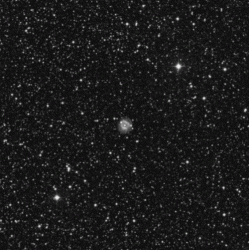 Now, move on to Aquila and look at the hot central star of an interesting planetary nebula – NGC 6804 (RA 19 31 35 Dec +09 13 32). You’ll find it almost four degrees due west of Altair. Discovered by Herschel and classed as open cluster H VI.38, it wasn’t until Pease took a closer look that its planetary nature was discovered. Interacting with clouds of interstellar dust and gases, NGC 6804 is a planetary in decline, with its outer shell around magnitude 12 and the central star at about magnitude 13. While only larger telescopes will get a glimpse of the central star, it’s one of the hottest objects in space – with a temperature of about 30,000 K!
Now, move on to Aquila and look at the hot central star of an interesting planetary nebula – NGC 6804 (RA 19 31 35 Dec +09 13 32). You’ll find it almost four degrees due west of Altair. Discovered by Herschel and classed as open cluster H VI.38, it wasn’t until Pease took a closer look that its planetary nature was discovered. Interacting with clouds of interstellar dust and gases, NGC 6804 is a planetary in decline, with its outer shell around magnitude 12 and the central star at about magnitude 13. While only larger telescopes will get a glimpse of the central star, it’s one of the hottest objects in space – with a temperature of about 30,000 K!
While you’re out under the stars, be sure to keep an eye open for the fast moving members of the Alpha Aurigid meteor shower whose radiant is in the northeast near Capella. Activity started just two days ago and will last through the next week. Here’s wishing you clear skies and a great weekend!!
This week’s awesome images are: NGC 6823/6820 – Credit: Palomar Observatory, courtesy of Caltech, Hickson Compact Group 87 – Credit: Palomar Observatory, courtesy of Caltech, NGC 7016/17/18 – Credit: Palomar Observatory, courtesy of Caltech, and NGC 6940 and NGC 6804 – Credit: Palomar Observatory, both courtesy of Caltech.

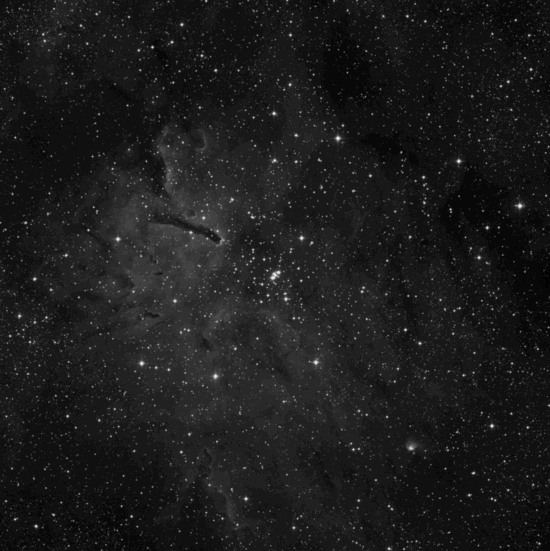
HAPPY FRIDAY Tammy! Thanks! 🙂 It’s going to be cloudy here in Minnesota tonight, so perhaps tomorrow will work.
Hi
I’m in Johannesburg, SA and for years I have been trying to see the two Magelanic Clouds, but I haven’t got the chance because of the lights in the big city. This weekend I went to a game reserve rest just north of Pretoria and last night finaly I saw them. Such a beautiful picture they made. The Southern sky is amazing. It is sad to not see all the stars from here.
I saw a huge fireball with a long blue tail as well on Friday night in Grand Rapids, Michigan. So suddenly appearing and then disappearing. What was that?
mabye it was toast that popped out of someones toaster!
🙂 🙂 🙂 🙂 🙂
Chances are very good if your activity appears to be coming from the northeast that you’re catching members of the Alpha Aurigid meteor shower!
“You put the bread right in the slot, you push the handle down and the wires get hot and you got toast…. Yeah, toast.” 😉
Saw a comet that lasted probably 10-12 seconds…Unbelievable! My wife and I were in complete Awe….Door COunty, WI. 10-4-08 12:10 am or so. I have never seen anything like it before. Huge fireball with yellow-gold fading trail that swept the whole sky. You could here people from all over the campground screaming and yelling in amazment. Awesome!